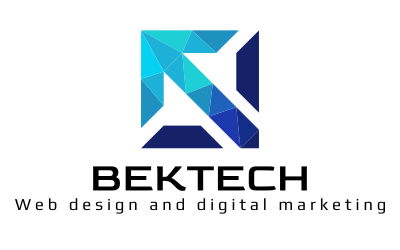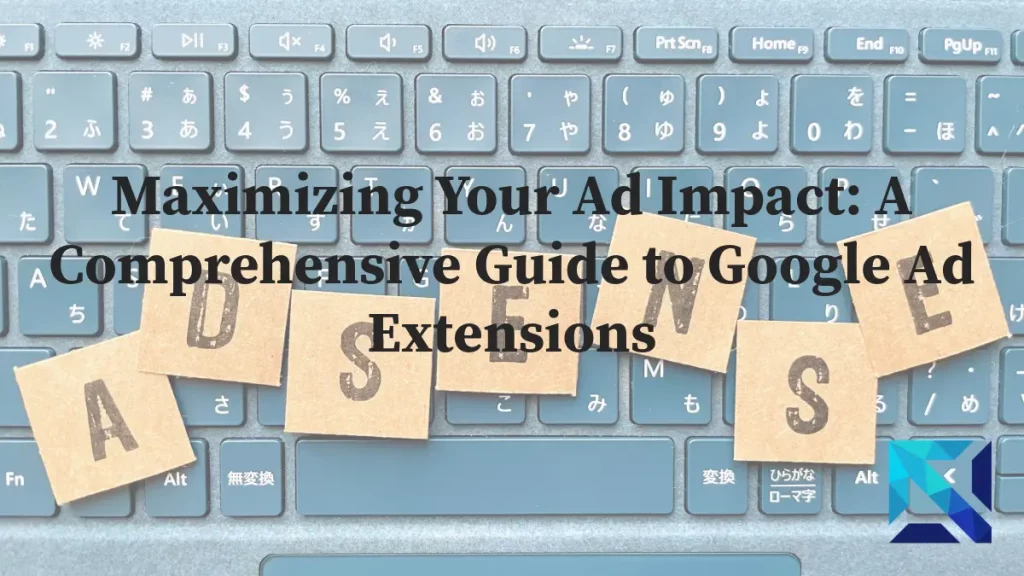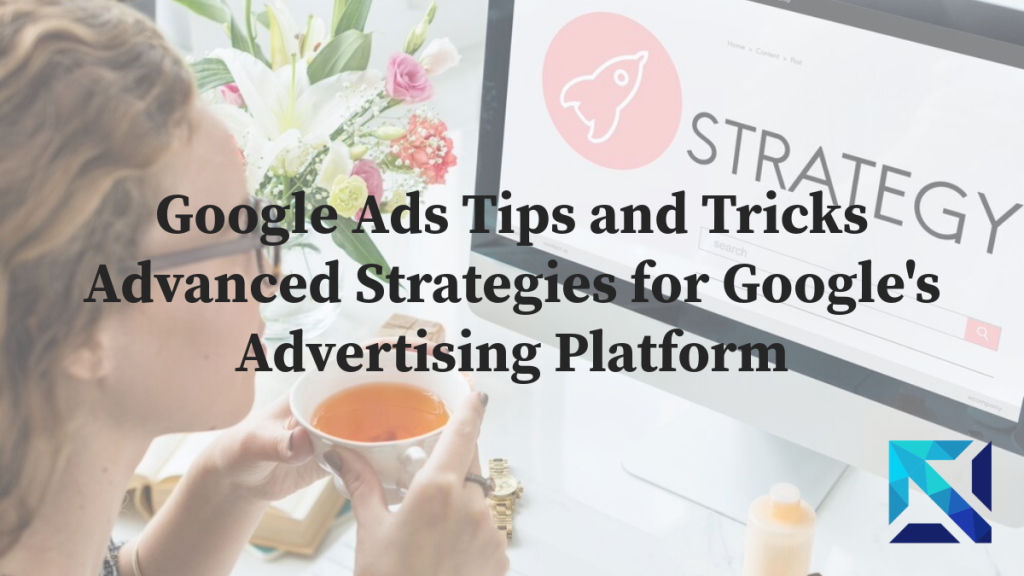PPC advertising is a dynamic digital marketing strategy that empowers businesses to reach their target audience with precision and immediacy. By strategically bidding on keywords, crafting compelling ad copy, and optimizing landing pages, you can drive significant traffic, generate leads, and boost sales. This comprehensive guide will delve into the intricacies of PPC advertising, from foundational concepts to advanced strategies, equipping you with the knowledge to create highly effective campaigns that deliver exceptional results.
What is PPC Advertising?
Pay-Per-Click (PPC) advertising is a dynamic online marketing strategy where businesses bid on specific keywords to display their ads at the top of search engine results pages (SERPs). Unlike organic search results, which rely on SEO, PPC guarantees ad visibility. When a potential customer clicks on your ad, you pay a predetermined amount.
This model offers unparalleled control over your advertising reach, enabling you to target specific audiences with tailored messages at the exact moment they’re searching for your products or services. Think of it as renting prime real estate on the digital landscape.
Imagine you’re searching for “best running shoes” on Google. The sponsored ads at the top of the page are PPC ads. These businesses pay to have their ads shown to potential customers actively seeking their products or services.
PPC ads vs. SEO: Understanding the Differences
Pay-Per-Click (PPC) and Search Engine Optimization (SEO) are the two titans vying for supremacy in the digital realm. PPC advertising, the quick-draw gunslinger, offers instant visibility through paid ads, but its reign is fleeting. SEO, the strategic chess master, builds long-term authority through content optimization and earns a coveted spot in search results. While PPC demands immediate investment, SEO requires patience and persistence. The key to digital success often lies in a harmonious blend of both strategies, leveraging their strengths to achieve maximum impact.
How Does PPC Work?
Imagine you’re a baker specializing in gourmet cupcakes. To get your delectable treats in front of hungry customers, you decide to advertise on Google. With PPC advertising, you bid on keywords like “best cupcakes in town” or “gourmet cupcake delivery.” When someone searches for these terms, your ad might appear at the top of the search results.
Click if you want to go through the checklist step by step and create a professional PPC campaign
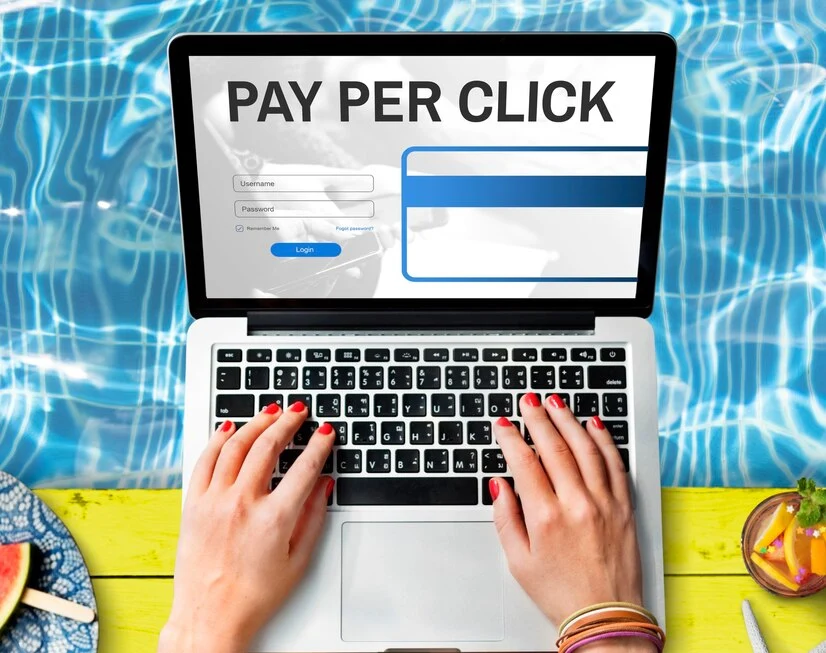
If a potential customer clicks on your ad, you pay a predetermined amount. However, you only pay when someone clicks; there’s no charge for simply displaying your ad. The beauty of PPC lies in its precision. You can target specific audiences, track your ad performance, and adjust your campaigns in real-time to maximize your return on investment (ROI).
Essentially, PPC is like renting prime real estate on the internet, where you only pay when someone shows interest in what you offer.
Understanding the Basics of PPC Advertising
PPC advertising optimization is the ongoing process of refining your campaigns to achieve the best possible results. By analyzing performance data and making data-driven adjustments, you can significantly improve your return on investment (ROI).
Key Optimization Areas checklist:
Keyword Management:
- Identify high-performing and low-performing keywords.
- Add negative keywords to refine targeting.
- Utilize keyword match types effectively.
Ad Copy Testing:
- Experiment with different ad variations to improve click-through rates (CTRs).
- Use strong calls to action and compelling headlines.
- Leverage ad extensions for additional information.
Landing Page Optimization:
- Ensure landing pages align with ad copy and search intent.
- Optimize page load speed and mobile experience.
- Improve conversion rates through A/B testing.
Bid Management:
- Adjust bids based on keyword performance and competition.
- Utilize bid adjustments for location, device, and time of day.
Ad Scheduling:
- Optimize ad delivery based on audience behavior.
- Pause ads during low-performing times.
Advanced Optimization Techniques
- Ad Extensions: Utilize location, call, site link, and structured snippet extensions.
- Ad Scheduling: Adjust bids based on the time of day and day of the week.
- Audience Targeting: Refine targeting based on demographics, interests, and behaviors.
- Conversion Tracking: Implement robust conversion tracking to measure campaign success.
- A/B Testing: Continuously test different ad variations and landing pages.
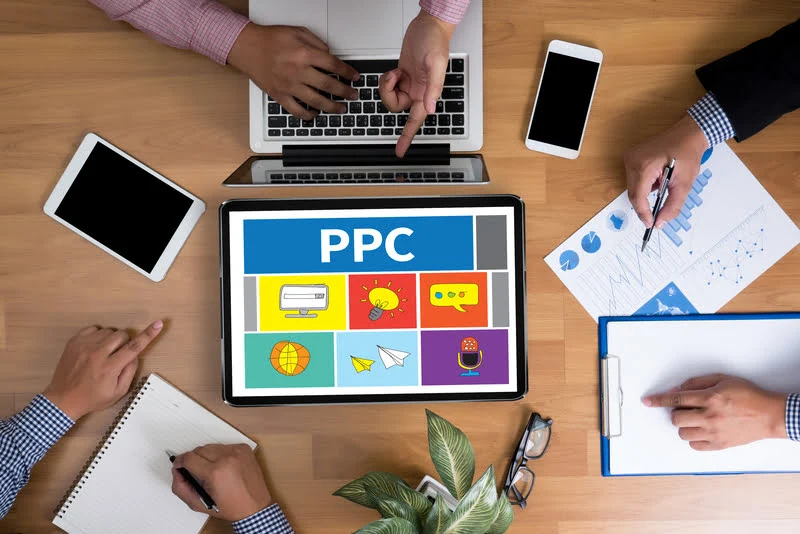
Keyword Research and Selection for PPC Success
Keyword research is the cornerstone of any effective PPC campaign. It’s the process of identifying and selecting the most relevant search terms that potential customers use when looking for products or services like yours. Think of keywords as the GPS guiding your ads to the right audience.
Key Steps in Keyword Research:
- Brainstorming: Start by listing relevant terms and phrases related to your business.
- Keyword Tools: Utilize tools like Google Keyword Planner, SEMrush, or Ahrefs to expand your list.
- Search Intent Analysis: Understand the intent behind search queries (informational, navigational, transactional).
- Competitor Analysis: Identify keywords your competitors are targeting.
- Keyword Grouping: Organize keywords into thematic groups for efficient campaign management.
Crafting Compelling Ad Copy and Landing Pages
Creating compelling ad copy and landing pages is the cornerstone of successful PPC campaigns. These two elements work in tandem to capture attention, generate clicks, and ultimately drive conversions.
Ad Copy: The First Impression
- Clear and Concise: Communicate your value proposition quickly and effectively.
- Strong Call to Action: Encourage immediate action with compelling verbs (e.g., “Shop Now,” “Learn More”).
- Highlight Unique Selling Points: Showcase what sets you apart from competitors.
- Leverage Ad Extensions: Enhance your ads with additional information (e.g., location, phone number).
- Continuous Testing: Experiment with different ad variations to optimize performance.
Landing Page Optimization
- Relevance: Ensure the landing page aligns perfectly with the ad copy.
- Clear Value Proposition: Clearly communicate the benefits of your product or service.
- Strong Call to Action: Guide visitors towards the desired action.
- Trust and Credibility: Build trust through customer testimonials, guarantees, and security badges.
- Mobile Optimization: Create a seamless experience for mobile users.
- Fast Loading Times: Optimize page speed for a better user experience.
Setting Up and Managing PPC Campaigns
Setting up and managing a successful PPC campaign involves a strategic approach. Here’s a breakdown of essential steps:
Campaign Structure and Setup
- Define campaign goals: Clearly outline your objectives (sales, leads, website traffic).
- Choose your platform: Select the appropriate platform (Google Ads, Bing Ads, Facebook Ads, etc.) based on your target audience.
- Create campaign structure: Organize campaigns, ad groups, and keywords effectively.
- Set a daily budget: Allocate your advertising spending wisely.
- Geographic targeting: Define your target location(s).
- Language targeting: Specify languages for your ad audience.
Crafting Compelling Ads
- Write persuasive ad copy: Create attention-grabbing headlines and compelling descriptions.
- Utilize ad extensions: Enhance your ads with additional information.
- A/B testing: Experiment with different ad variations to optimize performance.
Bid Management and Keyword Optimization
- Keyword research: Identify relevant keywords with high search volume and low competition.
- Bid strategy: Determine your bidding strategy (manual, automated, or a combination).
- Quality Score: Improve ad relevance and landing page experience to boost the quality score.
- Negative keywords: Exclude irrelevant search terms.
Tracking and Optimization
- Conversion tracking: Set up conversion goals to measure campaign success.
- Key performance indicators (KPIs): Monitor metrics like click-through rate (CTR), conversion rate, and return on investment (ROI).
- A/B testing: Continuously test different elements of your campaign.
- Bid adjustments: Optimize bids based on performance data.
Additional Tips
- Landing page optimization: Ensure landing pages align with ad copy and provide a seamless user experience.
- Ad scheduling: Adjust ad delivery based on audience behavior.
- Device targeting: Optimize ads for different devices (desktop, mobile, tablet).
- more magical tips and tricks!
To learn more about magical tools that help manage PPC advertising campaigns, read this article!
Bidding Strategies and Budget Allocation
Effective bidding and budget allocation are critical for PPC advertising success. By strategically managing these elements, you can optimize your ad performance and maximize your return on investment (ROI).
Understanding Bidding Strategies
- Manual CPC: Set bids manually for each keyword, offering granular control.
- Enhanced CPC: Automatically adjusts bids based on factors like ad extensions and device type.
- Maximize Clicks: Aims to get the most clicks within your budget.
- Target CPA: Sets a target cost per acquisition for conversions.
- Maximize Conversions: Focuses on driving the highest number of conversions.
- Target ROAS: Sets a target return on ad spend.
An e-commerce store selling shoes might use a Target CPA bidding strategy to set the maximum amount they’re willing to pay for each shoe sale.
Budget Allocation
- Campaign-level budgeting: Allocate funds to different campaigns based on priorities.
- Ad group budgeting: Distribute the budget among ad groups within a campaign.
- Keyword-level budgeting: Set individual bids for keywords.
- Daily and monthly budgets: Determine how much to spend per day or month.
A lead generation company might allocate a larger budget to campaigns targeting high-intent keywords and adjust bids based on conversion rates.
Additional Tips
- Start with manual bidding: Gain insights into keyword performance.
- Utilize bid adjustments: Adjust bids based on location, device, and time of day.
- Monitor performance closely: Track key metrics and make adjustments as needed.
- Test different bidding strategies: Experiment to find the best approach for your campaign.
Ad Extensions and Ad Scheduling
Ad Extensions: Boosting Your PPC Advertising Visibility
Ad extensions are additional pieces of information that can be added to your PPC ads to provide more details about your business and increase click-through rates.
Types of Ad Extensions:
- Sitelink extensions: Highlight specific pages on your website.
- Call extensions: Display your phone number for easy contact.
- Location extensions: Showcase your physical address and map.
- Structured snippets: Highlight specific product attributes or services.
- Callout extensions: Provide additional information about your business.
- Price extensions: Display prices for products or services.
Benefits of Ad Extensions:
- Increased ad visibility
- Improved click-through rates
- Enhanced user experience
- More information for potential customers
- Ad Scheduling: Optimizing Ad Delivery
- Ad scheduling allows you to control when your ads appear. By analyzing performance data, you can identify peak times for your target audience and allocate your budget accordingly.
Benefits of Ad Scheduling:
- Increased efficiency
- Improved ROI
- Reduced ad spend
- Better alignment with customer behavior
Example: A local restaurant might schedule their ads to appear during peak dining hours (lunch and dinner) and on weekends.
By effectively utilizing ad extensions and ad scheduling, you can significantly enhance your PPC campaigns and achieve better results.
Tracking and Measuring PPC Performance
Your Roadmap to Success

Tracking and measuring your PPC campaign’s performance is essential for optimizing your investment and achieving your marketing goals. By closely monitoring key metrics and making data-driven decisions, you can maximize your return on ad spend (ROAS).
Key Performance Indicators (KPIs)
- Impressions: The number of times your ads are displayed.
- Clicks: The number of times users click on your ads.
- Click-Through Rate (CTR): The percentage of impressions that result in clicks.
- Cost Per Click (CPC): The average amount paid per click.
- Conversion Rate: The percentage of website visitors who complete a desired action (e.g., purchase, lead form submission).
- Cost Per Acquisition (CPA): The cost of acquiring a customer or lead.
- Return on Ad Spend (ROAS): The revenue generated for every dollar spent on advertising.
Setting Up Conversion Tracking
- Define conversion goals: Clearly outline the actions you want to track (e.g., purchases, lead form submissions, newsletter sign-ups).
- Implement tracking code: Add conversion tracking code to your website to measure goal completions.
- Analyzing Performance and Making Data-Driven Decisions
- Regular reporting: Create regular performance reports to monitor key metrics.
- Identify trends: Analyze data to identify patterns and trends over time.
- A/B testing: Experiment with different ad variations to optimize performance.
- Keyword optimization: Adjust bids and keywords based on performance.
- Landing page optimization: Improve conversion rates by enhancing landing page experiences.
Tools and Platforms
- Google Analytics: Integrate with PPC platforms for comprehensive data analysis.
- PPC platform reporting: Utilize built-in reporting tools for campaign insights.
- Data visualization tools: Create visual representations of data for easier understanding.
Key PPC Advertising Metrics
Key PPC Advertising Metrics: Your Performance Barometer
Understanding and tracking the right metrics is crucial for the success of your PPC campaigns. Let’s delve into the key indicators that will help you measure and improve your performance.
Core Metrics
- Impressions: The total number of times your ad was displayed.
- Clicks: The number of times users clicked on your ad.
- Click-Through Rate (CTR): The percentage of impressions that resulted in clicks.
- Cost Per Click (CPC): The average amount paid for each click.
- Conversion Rate: The percentage of website visitors who complete a desired action.
- Cost Per Acquisition (CPA): The cost of acquiring a customer or lead.
- Return on Ad Spend (ROAS): The revenue generated for every dollar spent on advertising.
Advanced Metrics for Deeper Insights
- Quality Score: Google’s assessment of ad relevance and landing page quality.
- Ad Rank: Determines ad position based on bid and quality score.
- Impression Share: The percentage of impressions your ads received compared to eligible impressions.
- Average Position: The average position of your ads on the search results page.
The Different PPC Advertising Models
PPC advertising offers a diverse range of models to cater to different marketing objectives. Each model has its own strengths and is best suited for specific business goals.

Search Engine Advertising (SEA)
SEA involves displaying ads on search engine results pages (SERPs) when users search for specific keywords. This is the most common form of PPC advertising.
Display Advertising
Display ads are visual advertisements that appear on websites, apps, and other digital platforms. They can be image, text, or video-based.
Social Media Advertising
Leveraging social media platforms to deliver ads to target audiences. This includes platforms like Facebook, Instagram, LinkedIn, Twitter, and more.
Shopping Ads
These ads showcase product images, prices, and store names directly within search results. They are particularly effective for e-commerce businesses.
Video Advertising
Video ads are displayed before, during, or after video content. They can be skippable or non-skippable.
Remarketing
This involves showing ads to users who have previously visited your website, aiming to re-engage them.
Other Models of PPC Advertising
- Local Service Ads (LSAs): Designed for local businesses to appear in search results.
- Gmail Sponsored Ads: Ads displayed in Gmail inboxes.
- App Install Ads: Promote mobile app downloads.
Local PPC and Google Maps Advertising
Local PPC and Google Maps advertising are essential components of a successful local marketing strategy. These tactics allow businesses to reach customers actively searching for products or services in their geographic area.
Understanding Local Search
- Local Search Intent: Understand how users search for local businesses (e.g., “best pizza near me”).
- Local SEO: Optimize your Google My Business (GMB) profile for local search visibility.
- Keyword Research: Identify location-specific keywords and phrases.
Setting Up Local PPC Campaigns
- Create Location Extensions: Provide detailed business information and location details.
- Utilize Geo-Targeting: Target specific geographic areas or radius around your business.
- Bid Adjustments: Optimize bids based on location and device.
- Local Ad Extensions: Include specific offers or promotions for local customers.
Google Maps Advertising
- Claim and Optimize GMB Profile: Ensure accurate and complete business information.
- Encourage Reviews: Positive reviews boost your local search ranking.
- Utilize Google Maps Ads: Display your business prominently on Google Maps.
- Track Performance: Monitor clicks, calls, and website visits.
Measuring and Improving Local PPC Performance
- Key Metrics: Track local search clicks, impressions, and conversions.
- ROI Analysis: Evaluate the return on investment for your local PPC efforts.
- A/B Testing: Experiment with different ad variations and landing pages.
- Competitor Analysis: Monitor local competitors’ strategies.
Example: Local PPC for a Pizza Shop
Local PPC: A pizza shop owner wants to attract customers within a 5-mile radius. They create a Google Ads campaign targeting keywords like “best pizza near me,” “pizza delivery,” and “pizza takeout.” They also utilize location extensions to display their address and phone numbers.
Explanation: By using local PPC, the pizza shop can target people actively searching for pizza in their area. The location extensions provide additional information, making it easier for customers to find and contact the shop. This strategy helps increase visibility and drive local foot traffic or delivery orders.
Advanced PPC Advertising Strategies and Tactics
Advanced PPC strategies go beyond the basics and require a deeper understanding of user behavior, competition, and platform capabilities. Here are some key tactics to explore:
Audience Segmentation and Targeting
- Custom Audiences: Create highly targeted audiences based on website visitors, customer lists, and app users.
- Lookalike Audiences: Expand your reach by finding users similar to your existing customers.
- In-Market Audiences: Target users actively searching for products or services related to yours.
Bid Adjustments and Automation
- Location Bid Adjustments: Adjust bids based on geographic location.
- Device Bid Adjustments: Optimize bids for desktop, mobile, and tablet devices.
- Time-of-Day Bidding: Adjust bids based on when users are most likely to convert.
- Automated Bidding Strategies: Leverage platform-specific automated bidding options.
Conversion Optimization
- Dynamic Search Ads (DSAs): Create ads automatically based on your website content.
- Ad Scheduling: Optimize ad delivery based on high-performance time periods.
- Call-Only Ads: Drive phone calls directly from search results.
- App Promotion Ads: Promote mobile app downloads.
Attribution Modeling
- Understand the customer journey: Analyze touchpoints before a conversion.
- Assign credit to different marketing channels: Determine the impact of PPC on overall conversions.
- Advanced Analytics and Reporting
- Custom metrics: Create custom metrics to measure specific goals.
- Data visualization: Use tools to visualize campaign performance.
- Predictive analytics: Forecast future performance based on historical data.
By implementing these advanced strategies, you can gain a competitive edge, improve campaign efficiency, and drive higher ROI.
